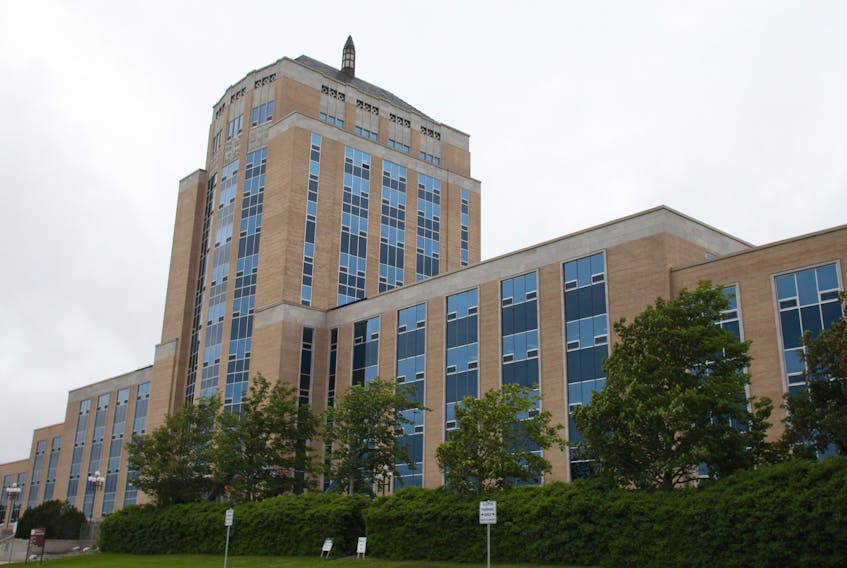ST. JOHN'S, N.L. —

I have been thinking a lot lately about entitlements.
In Canada, there are things to which we are entitled such as fresh air and clean drinking water, a quality education and good health care. We are entitled to work and to socialize in environments free from bullying and harassment. We are entitled to good representation and prudent management of public dollars.
Here in Newfoundland and Labrador, that prudent management of public funds requires a steely focus on how best to distribute our scarce resources to deliver essential programs and services. Finding the right balance between service levels and fiscal capacity has proven a challenge for successive governments since Confederation.
Newfoundland and Labrador is a large geographic land mass with mostly coastal communities founded by sea and later connected by road. We have 28,000 kilometres of road and a population of just 528,000.
According to the 2017 auditor general’s report, “Newfoundland and Labrador has approximately three times the number of kilometres of roads per person than the average of all other provinces.”
Add to that the provincial ferries we operate at a cost of close to $80 million annually and our seven commercial airports (by comparison, Nova Scotia has only three airports serving a population of around 924,000).
Our geography is a blessing, with beautiful landscapes and an abundance of natural resources, but also a curse, with hard-to-reach, expensive-to-maintain public infrastructure.
The efficient delivery of government programs and services is hindered by this and by antiquated management models. In this province, we also have an electoral system which rewards MHAs for how much money and infrastructure they bring into their community and not for how well they manage the affairs of the province as a whole.
It is time we push for electoral reform that ensures all elected officials do the right thing consistently for the betterment of all, not for their respective district.
When I began my year as chair of the St. John’s Board of Trade, Abacus Data released the results of a very telling survey. It said Newfoundlanders and Labradorians in every region of this province and of every political stripe know that we cannot afford to continue delivering government programs and services as we have been.
“For example, while 62 per cent of N.L. residents felt the provincial budget deficit and finances were a very big problem for the province — that view was shared most of all by those who voted NDP in 2015 (79 per cent) but was the majority view among PC (64 per cent) and Liberal (57 per cent) voters.” The study went on to reveal that 71 per cent of residents feel that things here are so bad that we “really have to consider new ways of doing things in the province.”
I refer to this study not to perpetuate negative thinking but to highlight that Newfoundlanders and Labradorians know we need change. The people get it and we know there are innovative solutions to program and service delivery. The citizens of this province are way ahead of government, particularly when it comes to the digital world.
Millennials, for example, are pushing us to catch up with other progressive areas of the world. Members of this generation value their time. They won’t stand in a line or wait 20 minutes on the phone to get a person who may or may not be able to help them. They want nothing to do with lines of any kind, even telephone lines. They want answers quickly and at their convenience.
This presents tremendous opportunity to deliver programs and services in a more efficient manner. Many governments have adopted digital government strategies to both be more efficient and to better serve a changing demographic.
It is amazing how transformative digitization can be. Have you landed at Toronto’s Pearson Airport recently from out of country? The automated kiosks have completely transformed the customs experience.
In Norway, the government set up a system in which every citizen can have their own electronic mailbox, enabling government agencies and businesses to deliver notices and bills electronically. Norway has set the stage for one of the most innovative eGovernment initiatives in the world.
Closer to home, the delivery of health care in rural areas has been enhanced by virtual technologies. Rosie, a remote presence robot, is delivering medical care to residents in Nain. FDA-approved Rosie connects patients to medical assistance when a doctor is not present, supporting timely access and avoiding the need for patients to travel long distances. Since 2010, doctors have been able to remotely direct Rosie to move around and interact with patients, as well as leverage the robot to read ultrasounds and double-check prescriptions. With the nearest physicians located 350 km away in Happy Valley-Goose Bay, this has had tremendous positive impacts on patient outcomes and health care delivery costs.
There is no debate: every single Newfoundlander and Labradorian is entitled to equitable access to essential government services. But we must be open-minded about the delivery model. Who knows … a new way just might be a better way.
Andrea Stack is chair of the St. John’s Board of Trade.
Related story:









